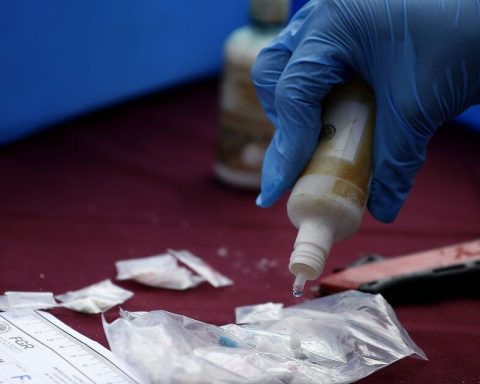Bogotá families expect school transportation to be efficient, as well as reliable and safe. However, the deterioration in school mobility has posed a challenge for actors in the sector, taking into account the wear and tear that spending hours on school transportation means for children and young people.
(Read: School quota for 2025: how to check the allocations in Bogotá?)
According to a report by OnTrack School, Route times in Bogotá vary significantly, with some routes exceeding 2 hours daily. This, they explain, represents a challenge for those in charge of mobility.
“The evolution of route times shows a significant increase in recent years that reflects the deterioration of school mobility and poses an urgent challenge to reverse this trend and mitigate its impact on students and families.“, they indicate.
(See more: These are the university courses that have adopted artificial intelligence the most)
In detail, 64% of the school routes studied have an average duration of more than one hour. Specifically, 17.8% of the routes lasted 1:09 hours congested, followed by 13.3% that remained congested for 1:01 hours.
In addition, the maximum average route duration reaches 2 hours 40 minutes under normal conditions, increasing increasingly to 3 hours 30 minutes on atypical days like last November 06, 2024where 38% of these vehicles were affected in mobility during those hours.
(Read also: How to get one of the 37,000 places offered by the Sena to study for free?)
School transportation
iStock
Now, regarding the peaks, they estimate that Bogotá and its surroundings present three peaks of maximum demand, with the interval of 6:15 am and 7:15 am being the most critical. This, taking into account that this schedule coincides with most of the morning school routes.
(Read: Icetex opens new call for loans for victims of conflict)
Analysis of the AM routes reveals that 63% have a duration between 1 hour and 1 hour 41 minutes, concentrating in intervals close to the average of 1 hour 29 minutes. Regarding the maximum duration of the routes, 31.8% reach times between 1 hour 41 minutes and 2 hours.
Likewise, in the afternoon, 38.3% of PM routes on a typical day have durations between 1 hour and 1 hour and 10 minuteswhile another 30.6% are in the range of 1 hour and 10 minutes to 1 hour and 20 minutes.
(See also:Grupo Argos Foundation says that business-university alliances are necessary)
“In atypical conditions, such as those on November 6, 2024, journey times showed a drastic increase: 34.7% of the routes had durations between 2 hours and 50 minutes and 4 hours and 8 minutes.”, they explain.

School transportation
iStock
This atypical situation is especially explained by unforeseen conditions such as heavy rain or high congestion events that can increase route times unsustainably.
Evolution of times
(See: How Saber 11 results reflect educational gaps between public and private)
Within the report, which analyzed the maximum duration of school trips between 2018 and 2024, a significant increase of 26% was evident, going from 114 minutes to 144 minutes for the last year
Among the reasons why these increases occur, OnTrack maintains that it is due to factors such as traffic congestion, changes in school entry and exit timesand the road infrastructure conditions seem to be determining factors in this problem.
(Read: Icetex opens call for credits for students with disabilities)
However, one of the warnings they make is that it is estimated that From now on to 2030, the time on the road could reach 190 minutes, which means an increase of almost double in just 12 years.

School transportation
iStock
“It is necessary to rethink urban mobility strategies and their impact on school transportation. More efficient route planning, coordination with school schedules and investment in traffic management technology must be prioritized to prevent this trend from continuing to increase.”they say.
(See: Expert talks about how to prevent university dropouts in Colombia)
They point out that those affected are especially students, since long journeys impact their health by increasing the time they spend in a sedentary position.
This prolonged habit can contribute to postural and musculoskeletal problems in developing children and increase the risk of obesity due to reduced time for physical activity.
(Read more: The important position that Bogotá would have in the Latin region, according to the World Bank)
“In terms of emotional well-being, students who spend long periods on school transport face high levels of stress and fatigue“, they conclude.

School transportation
iStock
Implications of school location
The data in the report shows that there are differences between schools located inside and outside of Bogotá. For example, while schools in Usaquén and Suba reflect average route times consistent with the city’s internal congestion, Schools in Chía face additional challenges due to their location outside the capital, which increases travel times significantly.
(Read: The reasons that would increase school dropouts in Colombia)
Thus, students traveling to and from Chía can spend more than 3 hours a day on school routes. “This figure exceeds the times observed in schools within the city”, they explain.
For this reason, they recommend using GPS-based route optimization and comparison systems to trace more efficient routes that reduce travel time and fuel consumption. In addition, They propose adjusting school schedules to avoid them coinciding with city traffic during rush hour.
(See also: Improving secondary education is the key to reducing poverty)


















